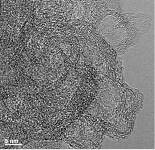Nanocarbon Materials for Ultra-High Performance Energy Storage



Objective
Amongst various energy conversion and storage devices, rechargeable Li batteries and supercapacitors are considered the most promising candidates to power next generation electric vehicles.
The ever-increasing demands for higher energy/power densities of these electrochemical storage devices have led to the search for novel electrode materials.
Different nanocarbon materials, in particular, carbon nanotubes, graphene nanosheets, graphene foams and electrospun carbon nanofibers, along with metal oxides have been extensively studied.
Approach
These electrode materials possess unique advantages, including (i) extremely large surface areas giving rise to enhanced Li ion storage capability and double layer capacitance, (ii) high electronic conductivities for fast transfer of electrons and ions, and (iii) long-term cyclic and thermal stability.
They also function as substrates and stress buffers to support active metal oxides with high capacities/capacitances while their geometries and dimensions allow the formation of 3D conducting networks with hierarchical nanoscale pores.
Impact
The resulting electrodes deliver unparalleled performance in terms of excellent specific capacity/capacitance, high rate capabilities and superior cycleability.
Contact
Jang-Kyo Kim, Professor Emeritus of Mechanical and Aerospace Engineering
Email: mejkkim@ust.hk